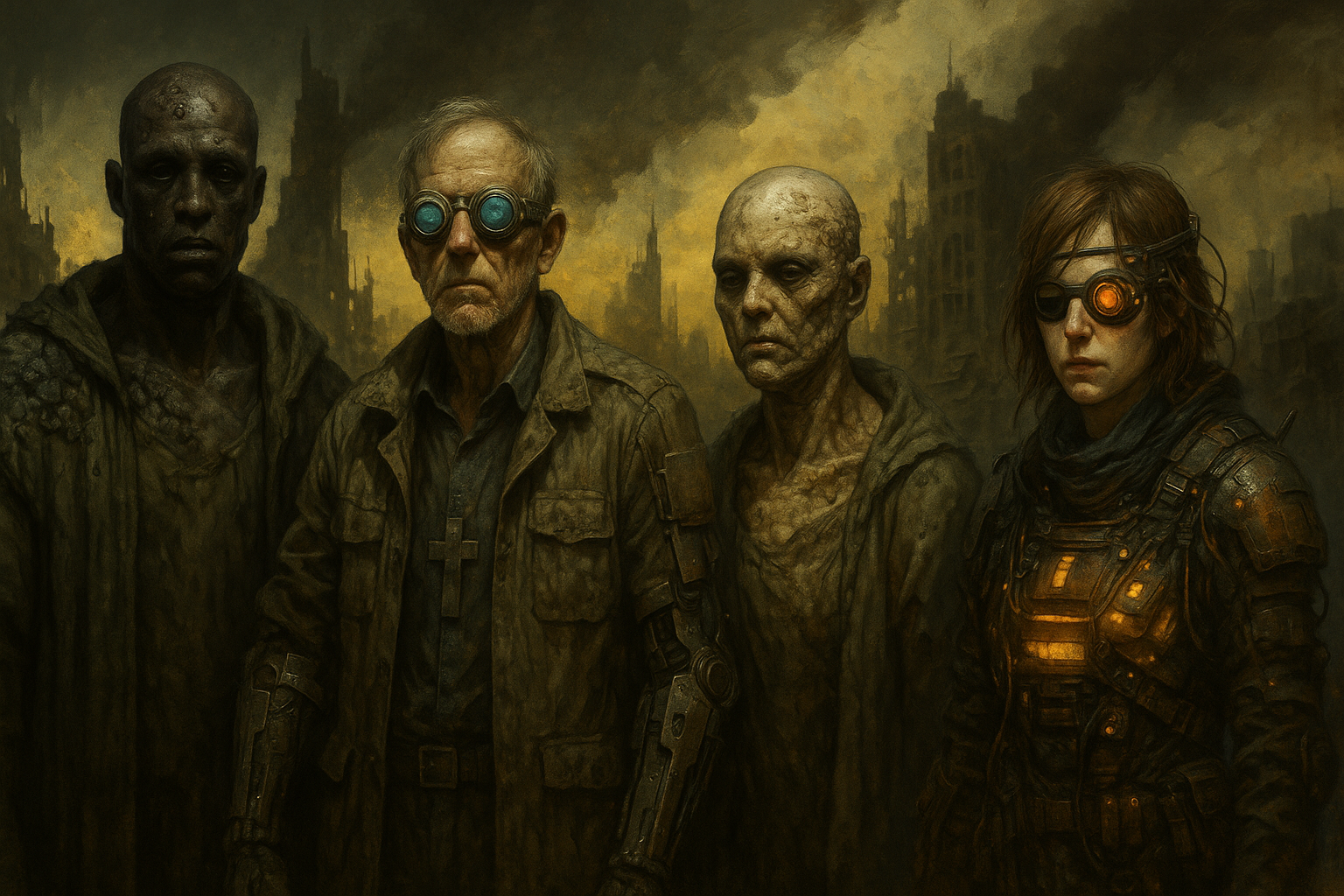Adaptations of the People of Camp Hope
In a world where humanity walks the razor’s edge between salvation and ruin, Camp Hope survives—not by preserving the old world, but by adapting to the new.
Overview
The citizens of Camp Hope, one of the most prominent post-Fall communities, have undergone significant transformations in response to the collapse of civilization and the emergence of the Sonohoka virus. These adaptations are not only physical but social, cultural, spiritual, and technological—each deeply interwoven with the doctrines that guide the camp.
From bodily mutations and technological enhancements to theocratic control and ethical shifts, Camp Hope represents a complex case study in the evolution of humanity in the face of extinction.
Biological & Medical Adaptations
Mutation Survivors: The Others
Roughly 25% of Camp Hope’s population are “Others”—individuals who survived Sonohoka Syndrome without converting into zombies, but who emerged mutated. These mutations range from visible physical traits to internal enhancements or alterations. All Others retain their consciousness, though they are frequently distrusted and surveilled.
- Traits: Hardened skin, heightened senses, regenerative abilities.
- Risk Factor: Many citizens believe Others walk a fine line between humanity and monstrosity.
Cybernetic Integration
Due to frequent injury, outdated medicine, and a limited gene pool, cybernetic augmentations are common. These are especially prevalent among those working in the Medical District or serving in camp leadership. The fusion of flesh and machine is not only accepted—it’s often viewed as divine adaptation through human ingenuity.
- Common Implants: Limb replacements, neural interface jacks, ocular enhancements.
- Cultural Note: Cybernetics are considered clean, while mutations are considered impure.
Psychological & Emotional Adaptations
Faith as Mental Armor
Camp Hope’s brand of post-apocalyptic Christianity serves as a form of psychological survival. Faith rituals, public confessions, and strict adherence to doctrine help residents maintain a semblance of stability amidst trauma and loss.
- Daily Rites: Cleansing rituals, gratitude services, protective prayers against mutation.
- Emotional Coping: Therapy is doctrinal—grief and fear are treated through faith.
Trauma Normalization
Children are taught from a young age to recognize symptoms of infection, monitor themselves for mutation, and perform triage on wounded family members. Euthanasia, mutation, and zombification are part of everyday education.
Social and Cultural Transformations
Stratified Society
Camp Hope enforces a rigid social hierarchy:
- High Rank: Doctors, cybernetically enhanced, the devout.
- Middle Rank: Laborers, scavengers, militia.
- Low Rank: Others, Awakened, and Automatons (who make up 1% of the population).
Deviation from religious doctrine or contamination by the Dark often results in social punishment or expulsion.
Religion as Policy
The Church District exerts immense influence. All laws are filtered through religious interpretation. Heresy trials, public penance, and doctrinal purity tests are routine aspects of life.
- Forbidden Practices: Unauthorized magic use, harboring infected, consorting with the Dark.
Infrastructure-Driven Behaviors
Power as Currency
Electricity is scarce and rationed. Battery packs, distributed by the Church and Medical District, serve as both utility and reward. Access to power directly corresponds to loyalty, obedience, and service.
- Uses: Lights, radios, medical equipment, cybernetic upkeep.
- Trade Value: High—often used in black market exchanges.
Agricultural Efficiency
Camp Hope operates a large-scale egg-based farming operation. Chickens are maintained in strict flocks, and food production is run with militaristic precision. No resource is wasted.
- Diet: Eggs, hydroponics, protein paste, occasional meat.
- Farmers: Live separately in Farm Housing, on the outskirts of the camp.
Ethical & Spiritual Transformations
The Sanctity of Cleansing
Zombified individuals or those showing signs of late-stage infection are “cleansed.” This is often done publicly, with ritual prayer and fire. Though grim, these ceremonies are framed as redemptive, allowing the infected to return to God’s grace before their final corruption.
Purity Doctrine vs. Survival
Cybernetics are celebrated as “holy tools,” but Others—despite surviving mutation—are seen as spiritually compromised. This dichotomy creates internal tension. For some, mutation is a test of faith; for others, it's a curse to be quietly endured.
Social Philosophy
Fear as Order
Camp Hope maintains peace not through freedom, but through control. Surveillance, doctrine, and hierarchy form a functionally paranoid society, where everyone watches everyone else—for signs of corruption, weakness, or deviation.
Yet despite this, people endure. They survive. And in their own way, they believe they are building something better.
In Summary
The people of Camp Hope have become:
- Cybernetic survivors and mutated miracles
- Believers ruled by doctrine and scientists pushing the edge of ethics
- Traumatized, yet determined
They are no longer just survivors of the Fall—they are what comes after the end of the world.




Comments